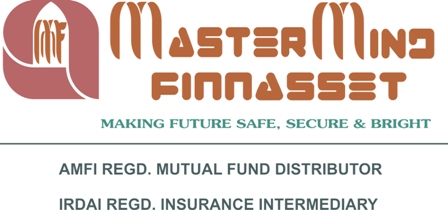Most individuals would have a few life insurance policies and one or two health insurance covers. Do they need to convert these policies into the paperless form? Even if it doesn’t cost a penny? "Yes, it makes a lot of sense. Many policyholders buy several policies — say two life policies, one health, one motor and one home insurance cover — and are often not able to keep track of all of them. If they have an e-insurance account, they can view all the policies at one location. It helps them access the policy details in case they want to make any changes or assess their protection portfolio.
As of now, the service is free of charge, but opening an e-insurance account is advisable, even if a cost element is introduced in future ," says certified financial planner Suresh Sadagopan, founder, Ladder 7 Financial Advisories. Those who derive comfort in the touch-and-feel factor of physical documents, or wish to avoid the documentation involved in opening an e-insurance account, though, need not worry. Dematerialising your policy is simply an option given to policyholders and is not mandatory. Also, if required in future, you can get the electronic version converted back into the physical form by approaching your insurer for re-matting.
Benefits of e-insurance
First, since you do not have to preserve a hard copy of your policy document, you don’t run the risk of losing them. You can simply download a copy from your account, if required. Also, you don’t have to go through the KYC process every time you are buying an insurance product. "From the customer’s perspective, it will increase convenience. For example , issuance of duplicate policies in case the policy documents are misplaced becomes easier and the customers also have an easy access to the online repository. Also, they can now view all their investments (insurance policies) and manage their portfolio through a single window ," adds Rajesh Relan, managing director and country manager, PNB MetLife India. Claim settlement also will become easier.
"Policy benefits would be paid through electronic facility to the registered bank account, thus facilitating a more convenient settlement," explains Vikas Gujral, executive vice-president and head, customer service and operations, Max Life Insurance. However, policyholders can merely lodge a claim through the e-insurance account submission of the relevant documents will have to be done offline. It could also be easier to track policy details such as nominees, maturity amount and premium or renewal due date, as they will be available at a single location. It will also maintain a record of claims made or loans taken against the e-policies.
"For instance , any service request change in address or other KYC-related information can be sent to the IR and it will get updated across all your policies in the e-insurance account," Viiveck Verma, executive director, Karvy Insurance Repository. You can also make your annual premium payments through your account. In case of a unit-linked insurance policies (ULIP), you can put in a request to switch funds.
The workings
The insurance regulator has licensed five entities — NSDL Database Management, Central Insurance Repository , SHCIL Projects, Karvy Insurance Repository and CAMS Repository Services — to act as insurance repositories (IRs). These repositories will facilitate the opening of e-insurance accounts (eIAs), which will hold all your policies in the electronic form. The policyholder will not have to pay any fees, as the cost will be borne by the insurers. "At the moment, the facility is available only to individual life insurance policies. But in a couple of months, it will be extended to other life insurance and non-life policies as well," says Verma You have three options to open an account: you can approach one of the five repositories directly, route the request through your insurance company or enlist the services of an ’Approved Person’ appointed by the repositories.
You will have to complete the account opening form and submit the same along with a cancelled cheque, your photograph, address proof and KYC documents (either Aadhaar or PAN card). You can’t open multiple demat accounts, as IRDA allows just one e-insurance account per person. "After the process is completed, a welcome kit containing your 13-digit account number and your log-in ID, along with information on operating the account, will be dispatched to you. Your personal identification number (PIN) will be sent separately ," says Verma. Subsequently, you can start the process of digitising your policies. Here again, you need to fill up a form. The insurer will then co-ordinate with the repository and the data transmission and confirmation will take place.
If you are buying a new insurance cover, you can opt for an e-policy. You will have to quote your e-insurance account number and ask for a demat policy at the time of filling up the proposal form. "You can do so, provided the insurer you are buying the policy from has enrolled with at least one insurance repository and is offering einsurance policies," says Gujral. Once your account is opened, you can choose to appoint an authorised representative, say your lawyer or chartered accountant, who is acquainted with details of all your policies . "Given that many nominees are unaware of the existence of the life cover, appointing an authorised representative will help at the time of claim payout in case of the life assured’s death," says Verma.

